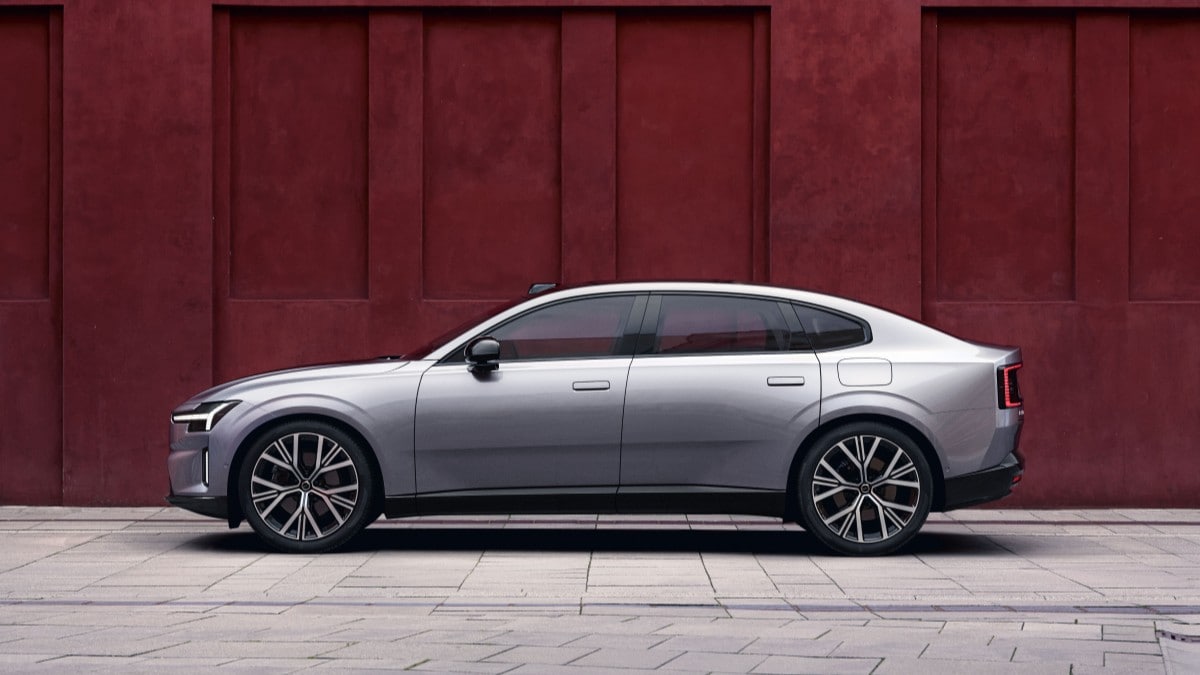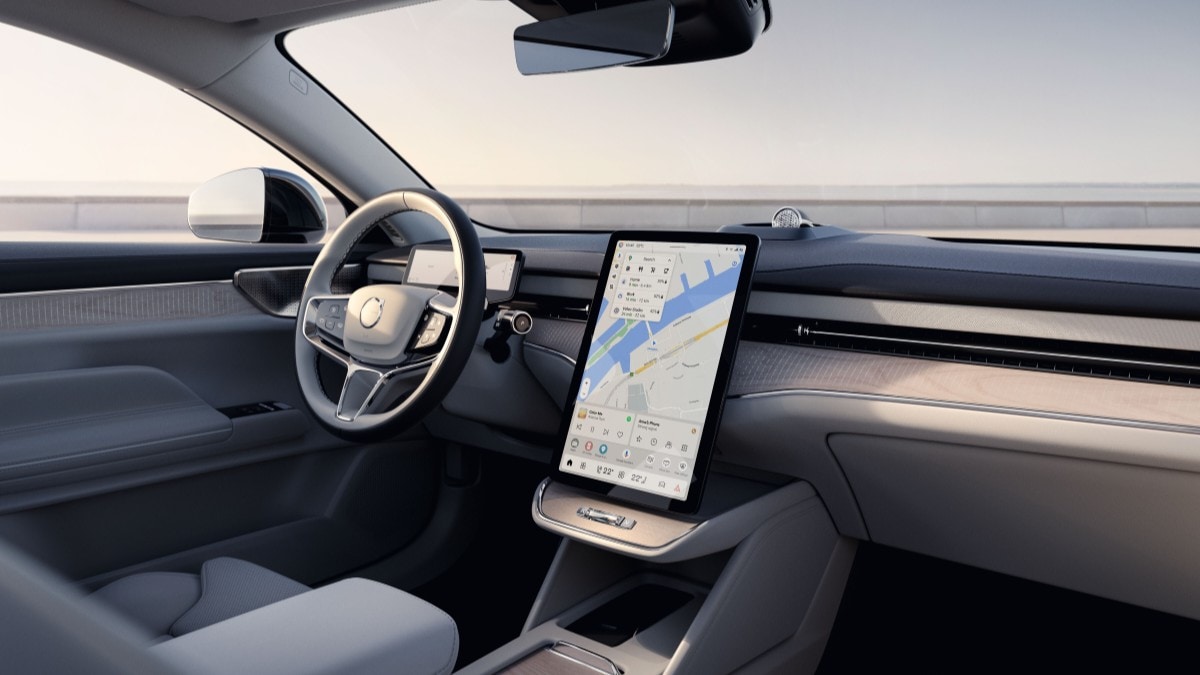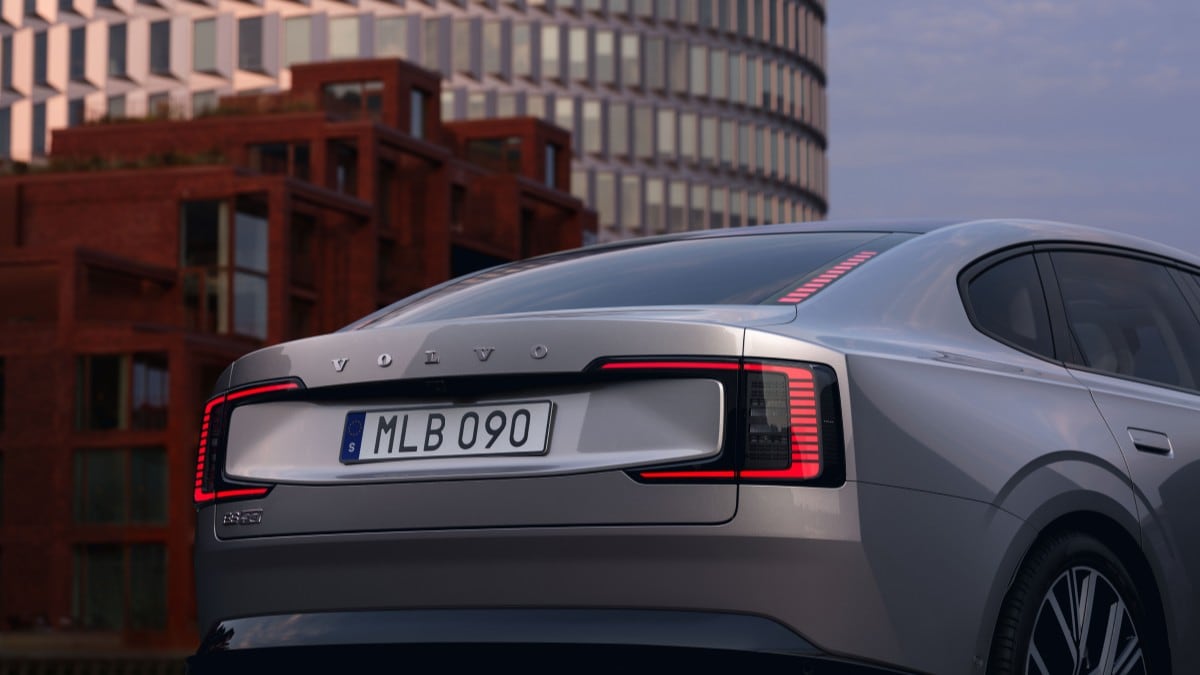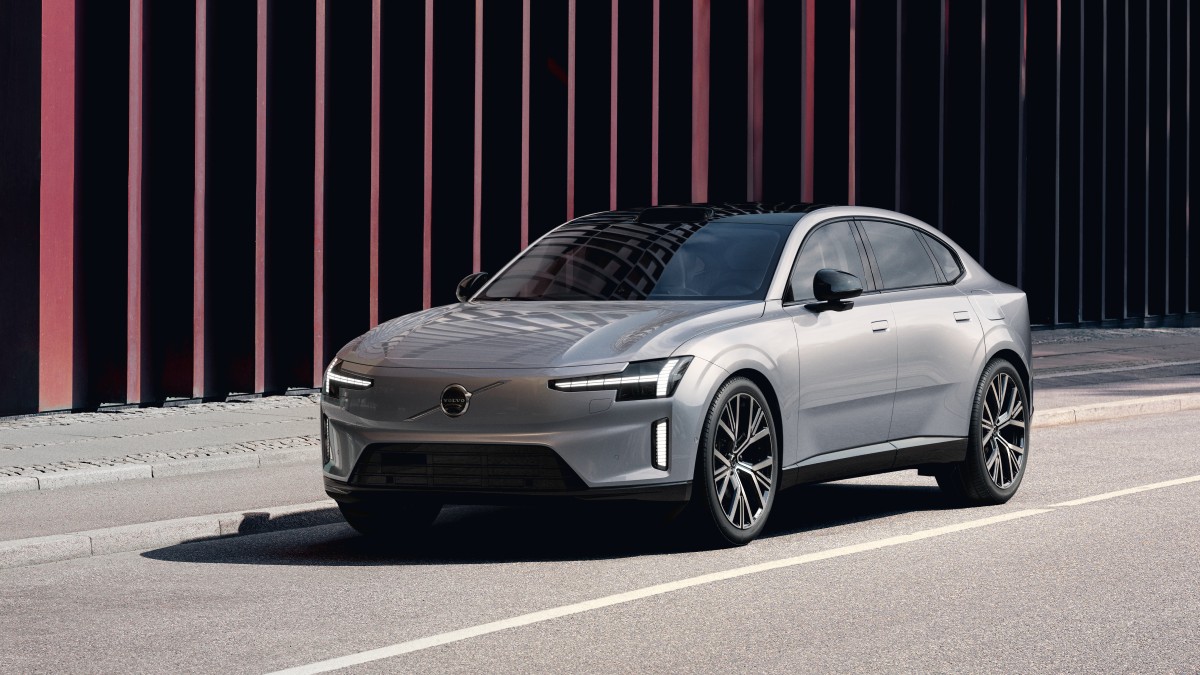Like most automakers in 2025, Volvo mostly sells SUVs. But the company built its reputation on safe, luxurious sedans and wagons. The Volvo in your neighbor’s driveway may be an SUV, but the one in your mind is more likely a sedan.
So a new top-of-the-line Volvo sedan is a matter of reputation for the company. Volvo raised the curtain today on its sedan of the future — the all-electric 2026 Volvo ES90.
Despite the name, it’s not an electrified version of the company’s S90 flagship sedan. The ES90 is new from the ground up, designed with a heavy focus on technology and borrowing a few parts from the all-electric EX90 SUV.
The company released no pricing details, and says only that the car will be available to Americans “later this year.”

Tall Sedan Look to Hide a Battery
The ES90 looks like the S90’s cousin who plays fullback. It has a high roofline for a sedan but only a little of the higher ground clearance you might expect from that.
The extra thickness goes to a battery pack set under the floor, but Volvo has done nothing to suggest that from the outside. So what you see is an unusually robust sedan, a bit like the distantly related Polestar 2 or even early-generation Subaru Legacy Outback sedans.
A roofline sensor pod looks like a taxi sign but holds an extensive suite of sensors, which we’ll cover in a moment.
The roofline is nearly fastback style, with segmented lights in the rear window arching down toward a pair of bracket taillights.
Less than convincingly, Volvo argues that the design blends elements of a sedan, SUV, and fastback. We just see a sedan that never skips a gym day.

Minimalist Cabin
Some electric vehicle (EV) designers have gone all-in on Tesla-style minimalism, while others have bet on old-fashioned buttons and switches. The ES90 might as well be called Model ES, so sparse is its cabin. A 9-inch driver’s display and 14.5-inch portrait-mounted central touchscreen handle nearly every interaction.
A small row of buttons beneath the screen lets it meet European standards that require buttons for specific functions.
But don’t think the car is spare. Standard equipment includes four-zone climate control, an air purifier that can “stop up to 95% of PM 2.5 particulates from entering the cabin and remove 99.9% of grass, tree and pollen allergens,” and enough sound deadening material that Volvo says this might be the brand’s quietest cabin ever.
“There are three levels available, led by a top-of-the-line Bowers & Wilkins sound system with 25 separate high-fidelity speakers throughout the cabin, including headrest and ceiling speakers,” the company says. “Exclusive to the Bowers & Wilkins system is a special mode replicating the sounds of London’s legendary Abbey Road Studios.”
Volvo relies heavily on Google for its infotainment system these days, so the screen runs Google built-in, including Google Maps, Google Assistant, and apps from the Google Play store. Volvo is advertising the ES90 as a technology item, repeatedly mentioning in press materials that it uses a Snapdragon Cockpit Platform from Qualcomm Technologies capable of 500 trillion operations per second (TOPS).
The company promises regular over-the-air software updates to add new features.

Three Levels of Performance
Volvo will sell Single-Motor (rear-wheel drive, or RWD), Twin-Motor (all-wheel drive or AWD), and Twin-Motor Performance versions of the 2026 ES90. They’ll put out 329 horsepower, 494 hp, and 635 hp, respectively.
Zero-to-60 times range from 6.7 to 3.9 seconds in Volvo’s own testing.
The company hasn’t published range figures for the U.S. In European testing, it earns a range rating between 403 and 434 miles. However, European tests tend to produce much longer range figures than American testing. Once the EPA performs its calculations, we expect final figures closer to 300 miles.
The company notes that the car uses an 800-volt architecture, which should enable quick public charging. It also matches the system Porsche, Hyundai, and Kia use for their EVs, which are among the fastest-charging models available today.
Most Tesla products sit on an older 400-volt system.
“The benefits of an 800-volt electric system are numerous: your battery gets charged faster, your electric car gets an improved overall performance, and the electric system is more efficient compared to a 400-volt system,” Volvo says. However, the company hasn’t provided numbers accurate to U.S. standards.
Powerful Sensors Looking Out and In
Safety technology includes “a strong safety cage, state-of-the-art restraint systems, as well as optimized deformation zones. The active safety systems are powered by an advanced array of sensors, including one lidar, five radars, seven cameras, and 12 ultrasonic sensors,” the company says.
That sensor suite lets it detect objects “beyond human range to help avoid collisions and hazards on the road. The ES90 also has our pioneering driver understanding system as standard, which can detect when the driver’s attention is no longer focused on the road and step in to support,” Volvo says.
Sensors inside “can sense submillimeter scale movement, such as the soft breathing of a baby,” helping power its rear seat reminder.








